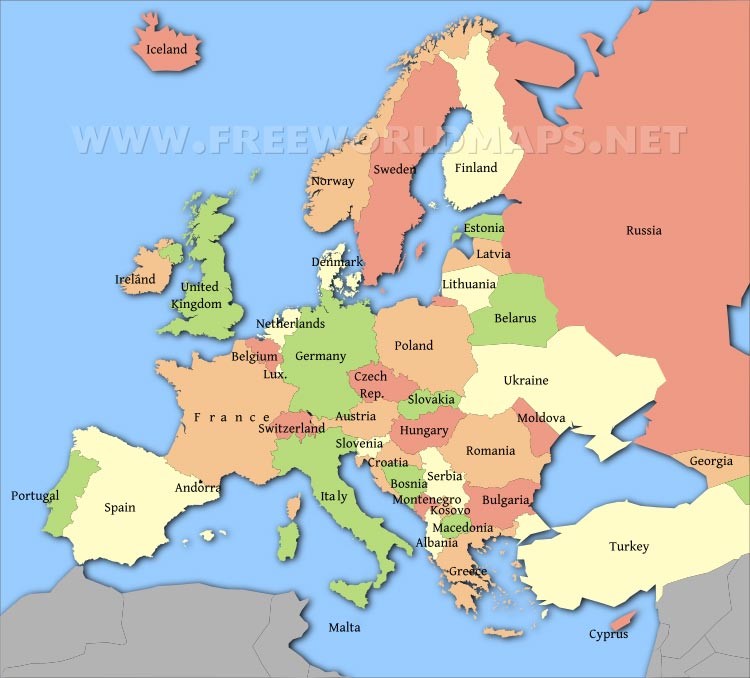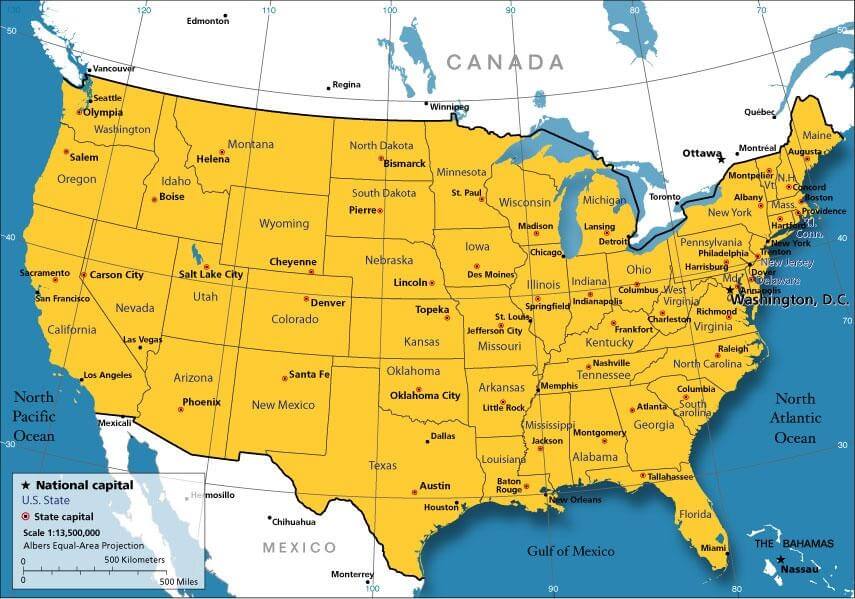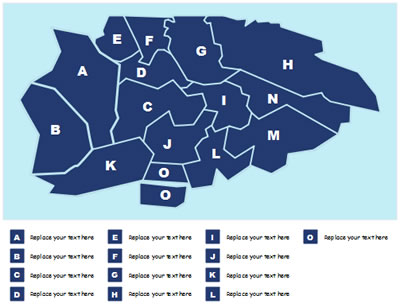Political maps, physical maps, topographical maps, and even simple road maps are all distinct types of cartographic representations. A political map is often the first map children encounter, aside from fictional treasure maps, yet most people never learn the formal term for this common reference tool. In fact, many go their entire lives without understanding the differences between various map types.
This comprehensive guide will explain what a political map is, its key features, advantages, disadvantages, history, and practical applications. You'll also gain insights into when and how to use them effectively.
Part 1: What is a Political Map
Among the most commonly used reference maps, political maps display the geographical boundaries that separate administrative units such as nations, states, and counties. They typically show major water features like oceans, rivers, and lakes, along with transportation networks and urban centers. Essentially, a political map represents the political characteristics of a given area rather than its physical landscape.
Political maps vary significantly in scale. Some encompass entire continents, while others focus on smaller regions like states or counties. You've likely encountered numerous political maps throughout your life, and understanding how to interpret them is essential for effective use.
Ready to Create Custom Maps for Clearer Regional Analysis?
EdrawMax Map Software enables you to create interactive map drawings with easy-to-edit templates. Quickly identify locations and regions with professional mapping tools.
Part 2: History of Political Maps
Historically, people created maps to demarcate land borders and territorial claims. Rulers including kings and queens relied on these maps to understand their domains, determine taxation areas, identify locations for loyal subjects, and plan territorial expansions through invasion or settlement.
During periods of crisis like the Great Famine, political maps became essential tools for governance. Authorities established relief works programs that allowed people to earn wages through public works projects such as road construction. Accurate maps were crucial for determining which landlords were responsible for relief efforts in specific regions, highlighting the practical importance of precise political boundaries.
Part 3: Advantages and Disadvantages of Political Maps
Advantages
- Political maps clearly display geographic borders and demarcated areas across global regions, showing ethnic and administrative divisions from east to west
- They provide essential reference information including countries, states, cities, and water body layouts, serving as vital resources for government planning and updated annually in atlases with color-coded national and regional distinctions
- These maps illustrate transportation infrastructure including highways, railways, and network corridors that form cultural and economic connections between global regions
Disadvantages
- Since the primary purpose is to represent government-controlled territories, physical accuracy is often compromised in favor of political boundaries
- Map projections can distort country sizes and shapes, though these distortions typically result from technical limitations rather than political agendas
- Topographic features receive minimal emphasis as the map focuses primarily on state and national boundaries
EdrawMax
Map Drawing Software >>
Part 4: When to Use Political Maps
Political maps are ideal for displaying governmental borders of countries, states, counties, cities, and towns, along with major geographical features. They typically include user-friendly indexes for quick reference and are particularly useful for understanding administrative divisions and political relationships between regions.
These maps help people comprehend global geography and are often the first map type introduced in educational settings. People frequently consult them as reference charts when they need answers about political boundaries, capital cities, or administrative divisions.
Part 5: Who Uses Political Maps?
Political maps serve diverse audiences by depicting national, state, county, and major city boundaries. They help identify regional socio-political patterns that influence group activities and government decision-making processes.
While traditionally printed on physical media, political maps are increasingly created digitally and viewed online. Millions of people use search engines daily to find political reference maps, with common searches including "United States map," "World map," "Europe map," and specific state maps like "Florida map."

Thousands of political reference maps have been created to represent United States geography at various levels—national maps, all 50 state maps, and maps of 3,142 counties (called parishes in Louisiana and boroughs in Alaska). Most counties are further divided into smaller political divisions, resulting in an extensive collection of maps just for US political geography.
Global, national, and continental political maps remain the most popular types used in educational and professional settings. They are frequently annotated with push pins, sticky notes, photos, marker flags, and strings to indicate family travels, business locations, or other significant places and events.
Want to create various map types quickly? Use EdrawMax Map Creator with pre-made templates and intuitive editing tools!
Part 6: How to Read a Political Map
Reading a political map effectively begins with understanding your orientation relative to the information presented. Certain map elements remain consistent regardless of format—direction is the most important. North always appears at the top, south at the bottom, east on the right, and west on the left. This standardization applies to all political maps.
Once oriented, follow these steps to read the map effectively:
- Review the map title to understand its subject and purpose
- Examine the map's symbols and markings for additional context
- Consult the legend to understand symbol meanings and color codes
- Use the scale to estimate distances between locations
- Reference the compass rose for directional orientation
- Analyze the map content to find specific information you need
Part 7: Political Map Example
Below is an example of a political map of the United States of America. The US is a federal republic consisting of 50 states, one federal district (Washington, D.C.), five major territories, and several island territories. The 48 contiguous states and Alaska form North America, while Hawaii and smaller outlying areas are located in the Pacific and Caribbean regions.

This political map displays the United States and neighboring countries, the national capital Washington, D.C., state boundaries, state capitals, and other major urban centers, providing a comprehensive view of the country's political geography.
Part 8: Conclusion
A political map distinguishes itself from other map types by emphasizing government and administrative boundaries rather than physical landscape features. It represents the abstract divisions between nations, states, territories, and cities rather than depicting the actual terrain.
This guide has covered everything you need to know about political maps, including their history, applications, benefits, limitations, and interpretation techniques.


